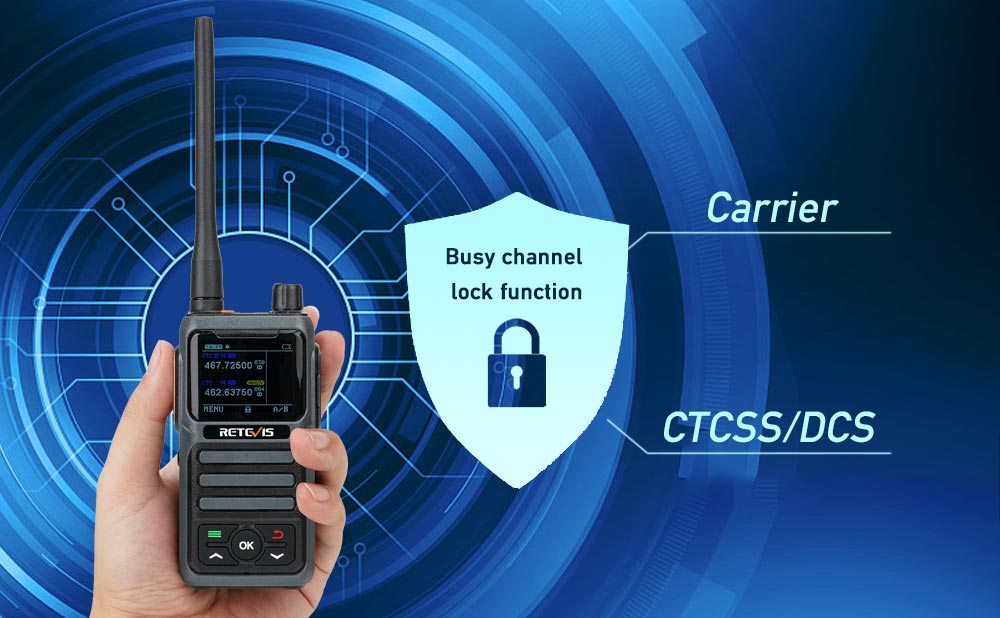Manual 15 is the busy channel lock function on RB17P GMRS radio. However, there are two choices for you, carrier and CTCSS/DCS. What is the difference? And how to use the busy channel lock function efficiently of RB17P? Let’s start to learn the operation.
Now, let’s know the basic information of RB17P radio. WHAT ARE THE RB17P RADIOS?
When to use the busy channel lock function?
If you do not want to receive other calls or do not want to transmit to strangers, you can use the function to filter out unnecessary calls. You may concern the CTCSS/DCS codes can also filter out the unnecessary calls or transmit them to other receivers, why do we have to use the functions? You can search the CTCSS/DCS codes in the manual, there are limited codes that can be chosen, so someone nearby could be using the same code for a call, causing the wrong message to transmit. But the busy channel lock function will prevent you from transmitting a channel that is in use.
What is the difference between carrier busy channel lock function and CTCSS/DCS busy channel lock function?
- Same frequency on channel 1, the left RB17P we called ‘A’, and the right one we called ‘B’. So, firstly, we choose the busy channel lock function in the menu and change it to the carrier on Radio A, and turn off the function on Radio B. We will find: when A transmitted, B can receive and transmit; however, A can only receive but can not transmit while B transmits, and you can hear a prompt beep if you want to transmit on Radio A. Because the carrier is the basis for determining the busy channel, and Radio A and B works at the same frequency.


- Same frequency on Radio A and B, but change the different CTCSS/DCS code on them. And A change carrier to CTCSS/DCS mode. You’ll find that when they’re in the same subaudio, if A is transmitting, then B can receive and transmit. But when B is transmitting, A can only receive and can’t transmit. And when A wants to transmit, there will be A beep. However, when A and B are using different subaudio, B transmits, and A can receive and transmit.


Do you understand now? If confused, pick up the RB17P and give it a try. If there’s anything else you’d like to know, let us know in the comments section and let us discuss.
Views: 20



